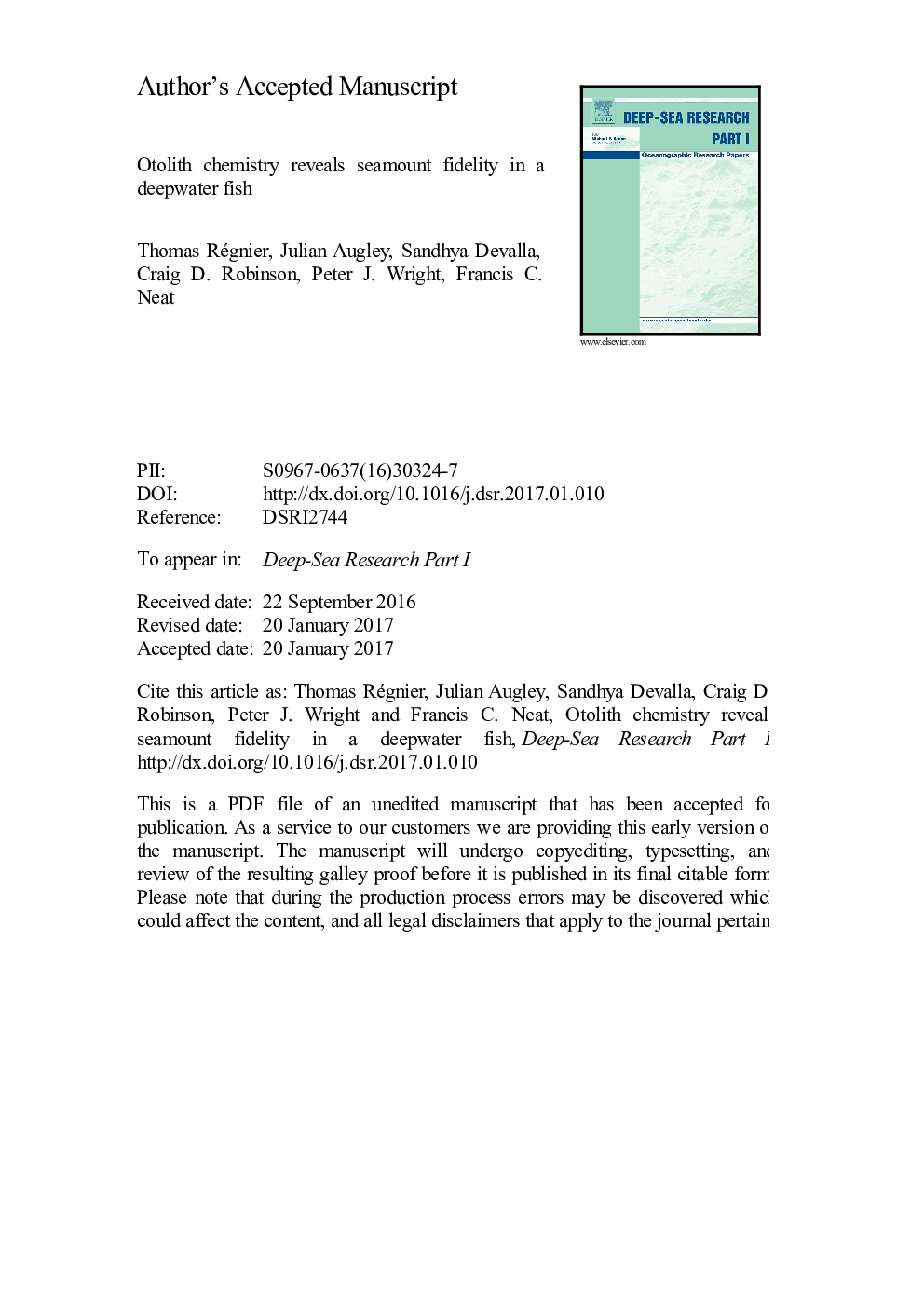| Article ID | Journal | Published Year | Pages | File Type |
|---|---|---|---|---|
| 5764635 | Deep Sea Research Part I: Oceanographic Research Papers | 2017 | 30 Pages |
Abstract
There are thousands of seamounts (underwater mountains) throughout the world's deep oceans, many of which support diverse faunal communities and valuable fish stocks. Although seamounts are often geographically and bathymetrically isolated from one another, it is not clear how biologically isolated they are from one another. We analysed the chemical signature of the otoliths of a deepwater fish, the roundnose grenadier (Coryphaenoides rupestris) to test the null hypothesis that there is random exchange between individuals from a seamount and other adjacent areas. The fish were sampled on the Scottish west coast, from the Rosemary Bank seamount and two adjacent locations of similar depth, in the same year at roughly the same time of year. We used flow-injection inductively coupled plasma mass spectrometry to measure trace element concentrations from micro-milled portions of the otolith corresponding to adult and juvenile life history stages. The elemental signatures of the fish from the seamount were distinguishable from the fish from the two other areas during both the juvenile and adult life-history phase. We infer that once juveniles settle on the seamount they remain there for the rest of their lives. Evidence for population structure should be factored into exploitation strategies to prevent local depletion and is an important consideration with respect to Rosemary bank being included in a network of Marine Protected Areas around Scotland.
Related Topics
Physical Sciences and Engineering
Earth and Planetary Sciences
Geology
Authors
Thomas Régnier, Julian Augley, Sandhya Devalla, Craig D. Robinson, Peter J. Wright, Francis C. Neat,
